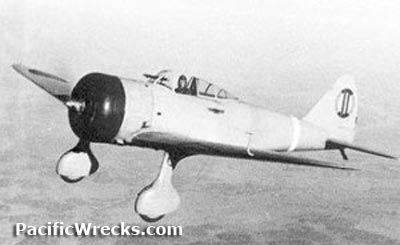Nakajima Type 97 Fighter / Ki-27 (Nate)
Technical Information
Background
 Initially conceived of as a private venture design by Nakajima corporation, the Ki-27 debuted and was accepted by the Japanese Army Air Force (JAAF) and entered service in 1937. The fighter was very maneuverable and fast, but lacked self-sealing fuel tanks, pilot protection and had only two 7.7mm machine guns. Initially conceived of as a private venture design by Nakajima corporation, the Ki-27 debuted and was accepted by the Japanese Army Air Force (JAAF) and entered service in 1937. The fighter was very maneuverable and fast, but lacked self-sealing fuel tanks, pilot protection and had only two 7.7mm machine guns.
Wartime History
Allied code name "Nate". Also code named "Abdul" in China Burma India (CBI). In the early war years, the Ki-27 enjoyed a period of success against the Chinese and Allied fighter pilots. As Allied fighter designed continued to improve, the Ki-27 was relegated to second line duty, training or kamikaze use. A two seat trainer version Mansyū Army Type 2 Advanced Trainer / Ki-79 built by Manshūkoku Hikōki Seizo K.K. with four sub-versions.
Export
The Ki-27 was also exported for use by the armed forces of Manchukuo and Thailand and saw combat with both.
Production
Ki-27a aproximately 565 were built.
Ki-27b a total of 1,492 were built (50 by Tachikawa Aircraft Company Ltd)
Ki-79 a total of 1,329 were built
Technical Details
Crew One (pilot)
Engine Nakajima Ha-1 Kotobuki Otsu (Ha-1b) 9-cylinder air-cooled radial piston engine 485 kW (650 hp) with two bladed propeller
Wingspan 11.31
m
Length 7.53 m
Height 3.25
m
Maximum Speed 292 mph
Range 390 miles / 627 km
Armament (nose) 2 × 7.7 mm Type 89 machine guns with 500 rounds per gun
Or, (nose)
1 x 12.7 machine gun and 1 x 7.7 machine gun on later models
Wing Racks 2 x 130 l (34 gallon) dorp tanks or 4 x 25 kg (55 lb) boms or 500 kg (1,100lb) bomb as kamikaze
|